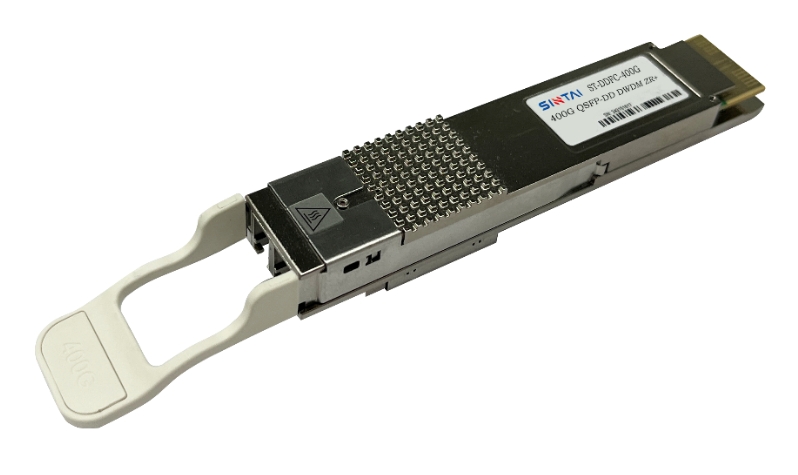In January 2025, the Optical Internetworking Forum (OIF) officially released the OpenZR ++ 2.0 standard, adding support for 1.6T coherent optical modules and FlexE (Flexible Ethernet) interfaces. The standard breaks down the barriers of traditional closed systems, allowing customers to mix and match products from the world's major optical module vendors.
Before that, we thought you might wonder what Open ZR++, Open ZR+ and Open ZR are, and have heard of OpenROADM, ZR, ZR+ and so on, we'll explain each of them below.
Standard | ZR | ZR+ | OpenROADM | Open ZR | Open ZR+ | Open ZR++ |
Rate | 100G | 200G-400G | 100G-400G | 400G | 400G | 800G-1.6T |
Transmission Distance | 80km | 120-600km | 80-1000km | 80-120km | 120-600km | 40-80km |
Openness | Open (OIF) | Vendor private | Multi-vendor interoperability | Open (OIF) | Industry collaboration (Informal standard) | Open (OIF is evolving) |
Typical Applications | Edge DCI | Regional backbone network | Operator Backbone Network | Cloud DCI | Metro DCI | AI/ Supercomputing Center Interconnection |
Cost (Module) | 1K-2K | 10K-20K | System-level investment | 5K-8K | 10K-15K | 15K-30K (estimated) |
Definition and standards
Standards organization: IA (Implementation Agreement) led by OIF (Optical Internetworking Forum).
Technical features:
o Rate: 100Gbps (single wavelength).
o Modulation format: DP-16QAM (dual-polarization hexadecimal quadrature amplitude modulation).
o Transmission distance: 80km (without relay).
o FEC (Forward Error Correction): Based on O-FEC (Open FEC), the error correction capability is about 2E-4.
Application scenarios:
o Metropolitan area DCI (data center interconnect) and edge network short-distance interconnect.
Advantages and limitations
Advantages: Low power consumption (<5W), low cost (1,000−1,000−2,000/module).
Limitations: Only supports 100G and cannot be smoothly upgraded to higher capacity.
Definition and standards
Background: Some manufacturers have launched enhanced solutions to overcome ZR limitations, these solutions are not standardized.
Technical features:
o Rate: 200G/400G (based on DP-QPSK or DP-16QAM).
o Transmission distance: 120-600km (by optimizing FEC and DSP algorithms).
o FEC: Proprietary algorithm
Application scenarios:
o Regional backbone network, long-distance DCI (such as inter-city data center interconnection).
Advantages and limitations
Advantages: high capacity, long distance, compatible with existing DWDM systems.
Limitations: Vendor lock-in (cannot interoperate with other brands of equipment), high cost (10,000−10,000−20,000/module).
Definition and standards
Standards organization: The Open Optical Networking Initiative, initiated by some large operators.
Core goal: To achieve multi-vendor interoperability of optical network equipment (ROADM, line systems).
Technical features:
o Hardware: Standardized chassis, pluggable optical modules (such as 400ZR).
o Software: SDN controller based on YANG model, supporting OpenConfig protocol.
o Wavelength-independent/direction-independent/contention-independent (W/D/C-ROADM).
Application scenarios:
o Operator backbone network reconstruction
Advantages and limitations
Advantages: Break the traditional closed system and reduce operating costs by 30%.
Limitations: The ecosystem is relatively immature and support from small and medium-sized manufacturers is limited.
Definition and standards
Standards organization: Led by OIF, in collaboration with OpenROADM and telecom operators.
Technical features:
o Rate: 400Gbps (single wavelength).
o Modulation format: DP-QPSK (Dual Polarization Quadrature Phase Shift Keying).
o Transmission distance: 80-120km (metropolitan area scenario).
o FEC: Uses CFEC (Concatenated FEC) with an error correction capability of 5E-3.
Application scenarios:
o Cloud service providers’ ultra-large-scale DCI.
Core values
Openness: Supports interoperability among multiple vendors.
Cost: Module price drops to 5,000−5,000−8,000 (mass production scale effect).
Definition and standards
The product of the standard vacuum period:
Open ZR (400ZR) was standardized by OIF (Optical Internetworking Forum) in 2020, focusing on 400G/80km metro DCI scenarios, but its transmission distance and performance cannot meet the long-distance requirements of some customers. Traditional vendors' private ZR+ has strong performance but suffers from vendor lock-in.
Industry compromise:
To fill the gap between Open ZR and private ZR+, some vendors and operators proposed Open ZR+, which aims to extend transmission distance and performance through open collaboration while retaining multi-vendor interoperability.
Technical characteristics
o Rate: 400 Gbps (single wavelength, compatible with Open ZR).
o Transmission distance: 120-600km (by optimizing FEC and modulation format).
o Modulation format: DP-QPSK (Dual Polarization Quadrature Phase Shift Keying) or DP-16QAM (dynamic switching).
o FEC (Forward Error Correction): Enhanced oFEC (error correction capability reaches 3E-3, higher than Open ZR's 5E-3).
o Power consumption: about 8-12W (slightly higher than Open ZR's 5-8W).
Openness:
o The hardware interface complies with the Open ZR standard (such as QSFP-DD packaging).
o Supports interoperability between optical modules from multiple vendors and third-party line systems.
Definition and standards
Standard progress: OIF is developing the next-generation open standard (expected to be commercially available in 2025).
Technical features:
o Rate: 800Gbps/1.6Tbps (single wavelength).
o Modulation format: Probability Shaping (PS) DP-16QAM or DP-64QAM.
o Transmission distance: 40-80km (short distance optimization).
o FEC: Enhanced oFEC (error correction capability up to 1E-2).
Application scenarios:
o Interconnection between AI computing centers
Competition focus
Power consumption: Target: <15W/800G module (silicon photonics integration technology).
Interoperability: Supports integration with OpenROADM and OpenConfig ecosystems.
Sintai Communication currently provides standard optical modules such as 100G QFP28 ZR DCO, 400G QSFP-DD Open ZR+ DCO and son, if there are any interest, please feel free to contact us.


